NOVEMBER 22, 2022 : There were still a few sites on the Wandering Jew list for Athens that we had not yet visited and there were also a couple of tourist attractions that I still wanted to go to. So that was the plan for today – tour the places around Athens that were leftover, places that we had not yet had a chance to see. Up to now, we had walked everywhere, and today we would also learn to use Athens’s mass transit.
Our first stop of the day was just a block away from our apartment – a visit to the central market. We arrived there too early – they were just setting up. Not much to see yet.
From there, Mark went to Chabad. Yesterday we had been at their restaurant, and the Chabad Rebbetzin came to say hello and told us they now use technology to help get a minyan for morning prayers. If you were interested in participating, you scanned a QR code to automatically join a WhatsApp group. If enough people joined, there would be a minyan. It didn’t quite work as planned – the 10th person joined early morning, and others did not see that he joined in time, so they did not arrive. In any case, it was interesting to see that this Chabad embraced a new technology for their outreach.
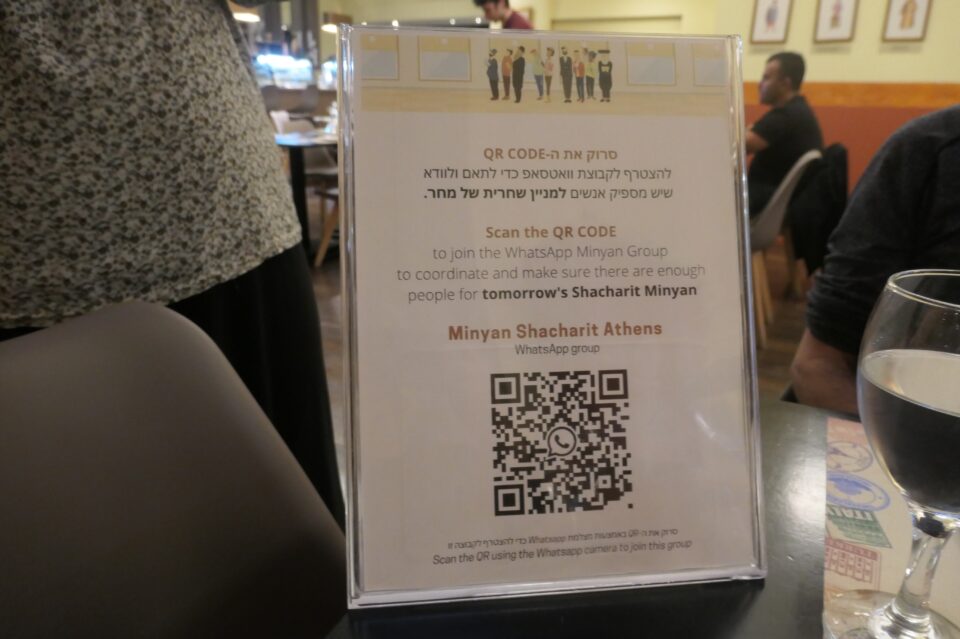
On our list for today, was to visit the two Jewish cemeteries in Athens. It was a bit confusing. The old Jewish cemetery is located in the First Cemetery of Athens, adjacent to the center of town. The second, newer Jewish cemetery, is located in the Third Cemetery of Athens, in a suburb called Nikaia. Although both are sections of larger municipal cemeteries, they are in their own walled separate areas, with their own entrance gates.
When Mark returned from Chabad, we called the Jewish community, to ask about visiting the old Jewish cemetery. It took five phone calls and some emails but at the end, they told us the caretaker would open the cemetery for us at 11:00.
We would need to hurry – it was two kilometers away, and we barely had enough time to reach there before 11:00. The last thing we wanted was to arrive and find that the caretaker did not wait for us. Mark ran ahead and arrived exactly on time, and I eventually caught up, several minutes later. The cemetery however was locked, and no one answered when we knocked.
After a while, we called Jewish community. They eventually called back and said the caretaker was running late and we should wait. We waited (and waited) and eventually the caretaker arrived.
He opened the gate and we walked into a small cemetery, totally full. The tombs seemed to be in disarray – they were in many different styles, old tombs were next to new ones, some were aligned horizontally and others vertically in the same row. It gave the impression that they utilized whatever space they could to bury the dead.
In total, the cemetery has about 900 graves. The oldest tombstone we saw was from 1889. There were many where the writing on the tombs was not possible to read – these were numbered and engraved with Bet-Daled-Aleph (ברוך דיין האמת – the Jewish blessing on death).
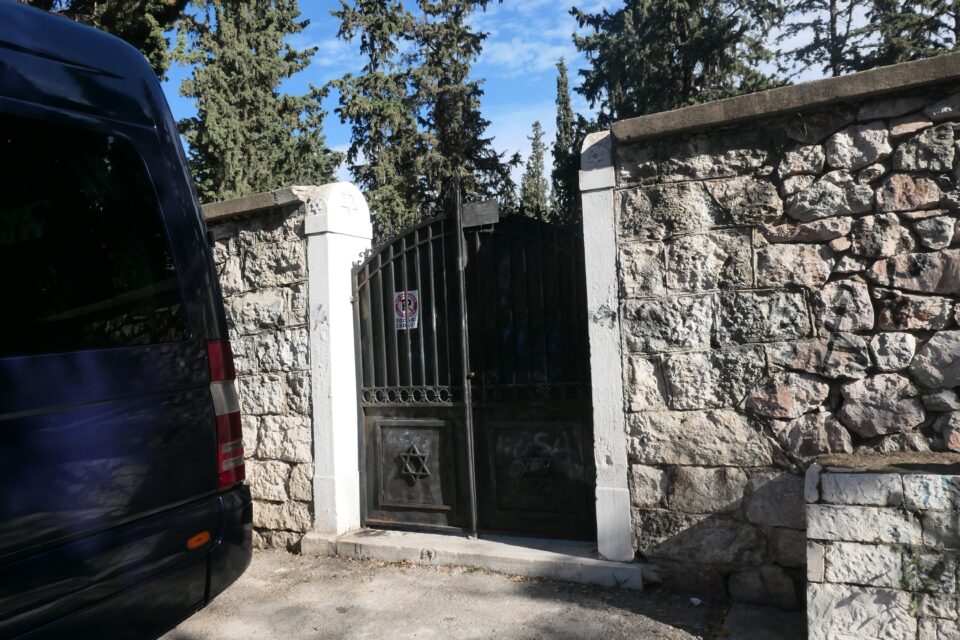
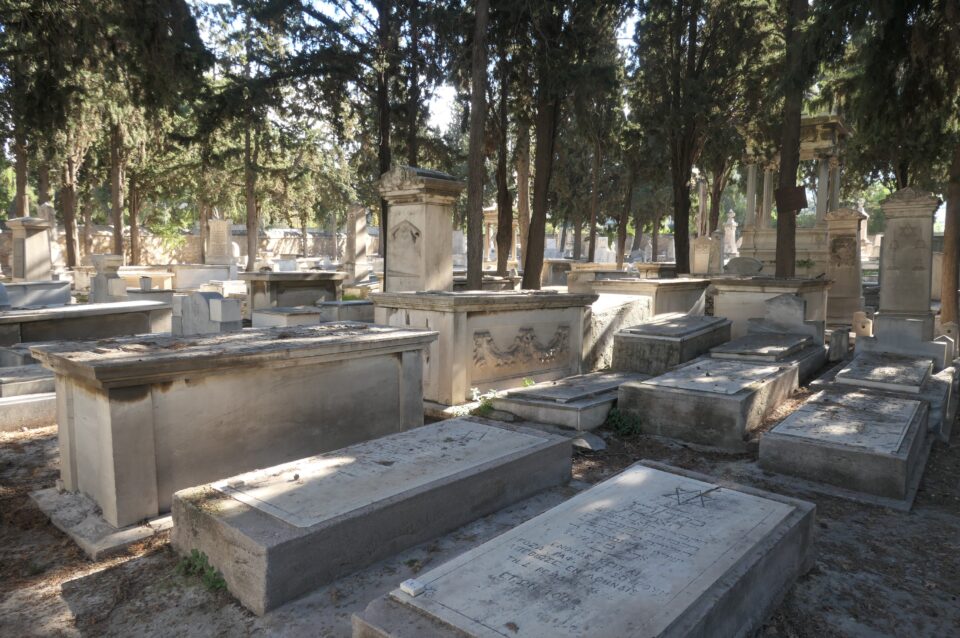
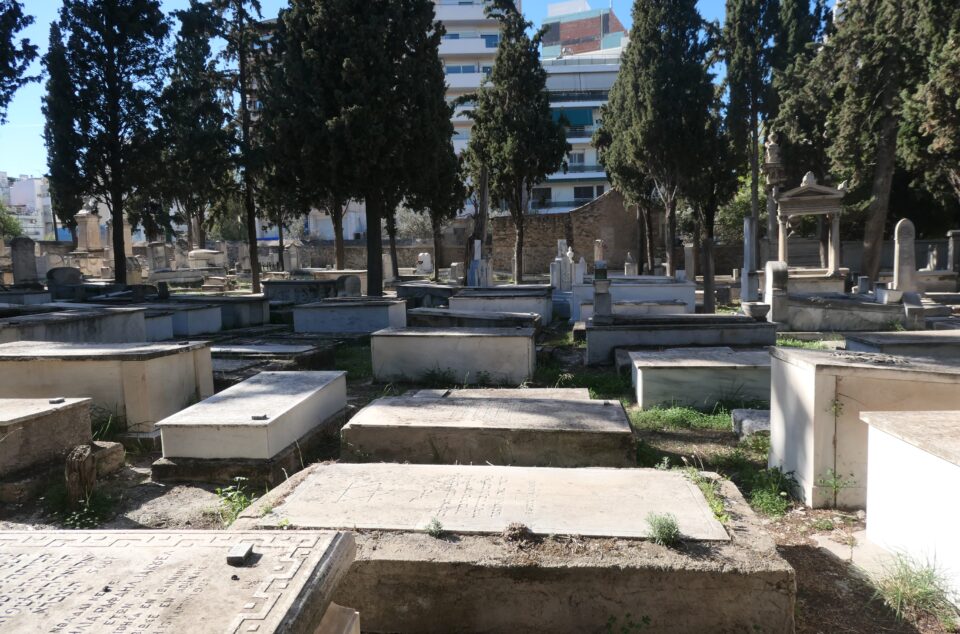
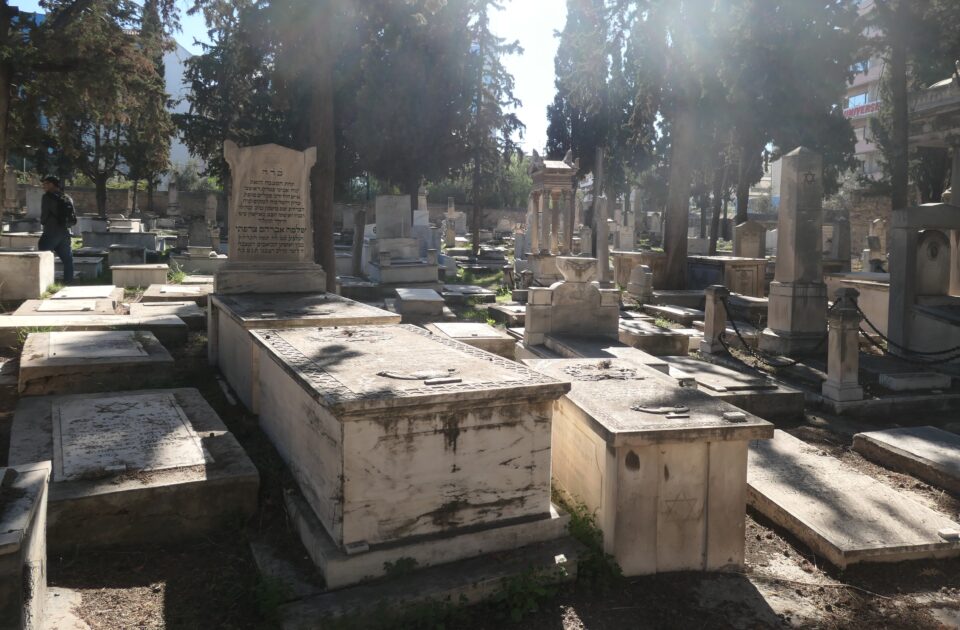
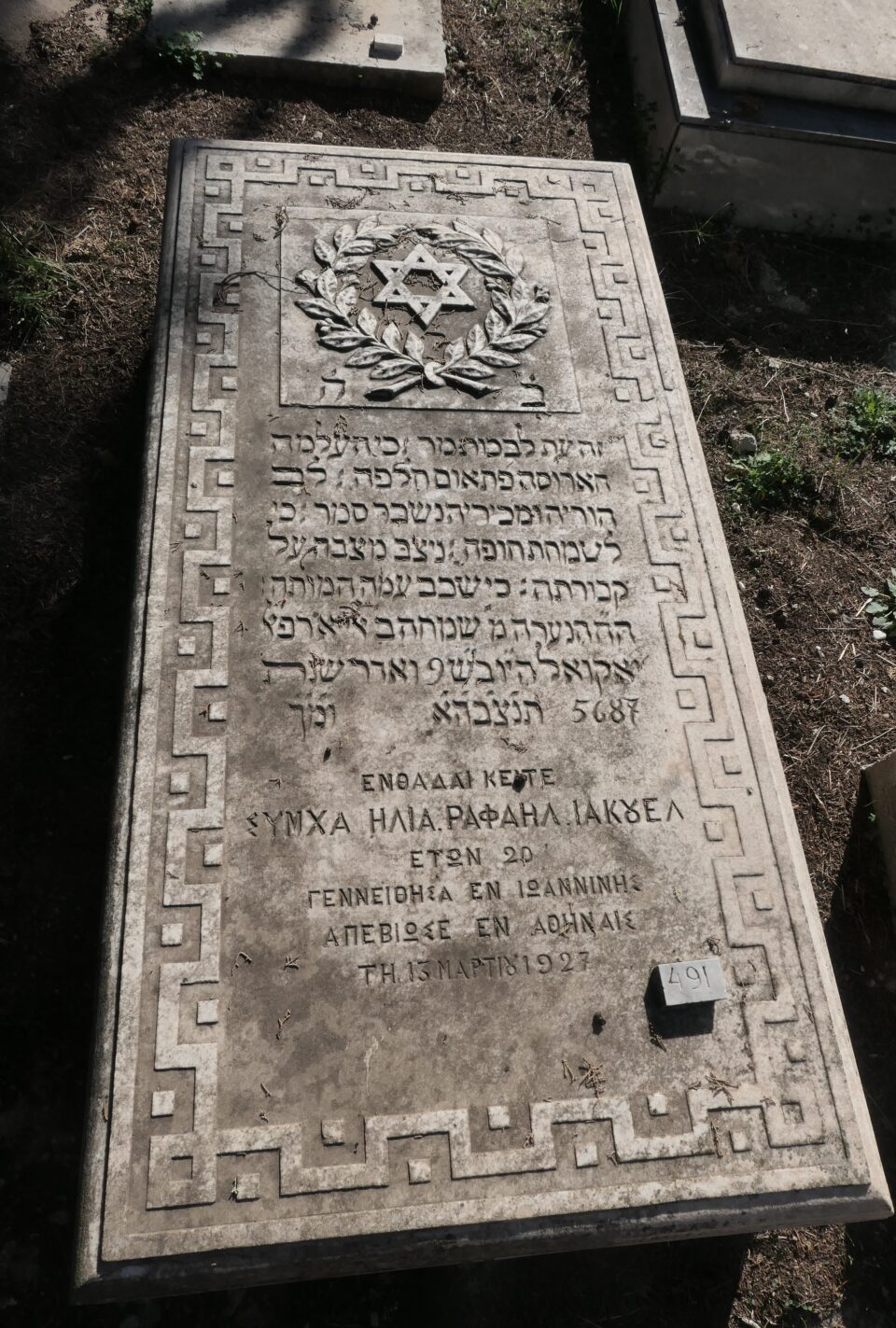

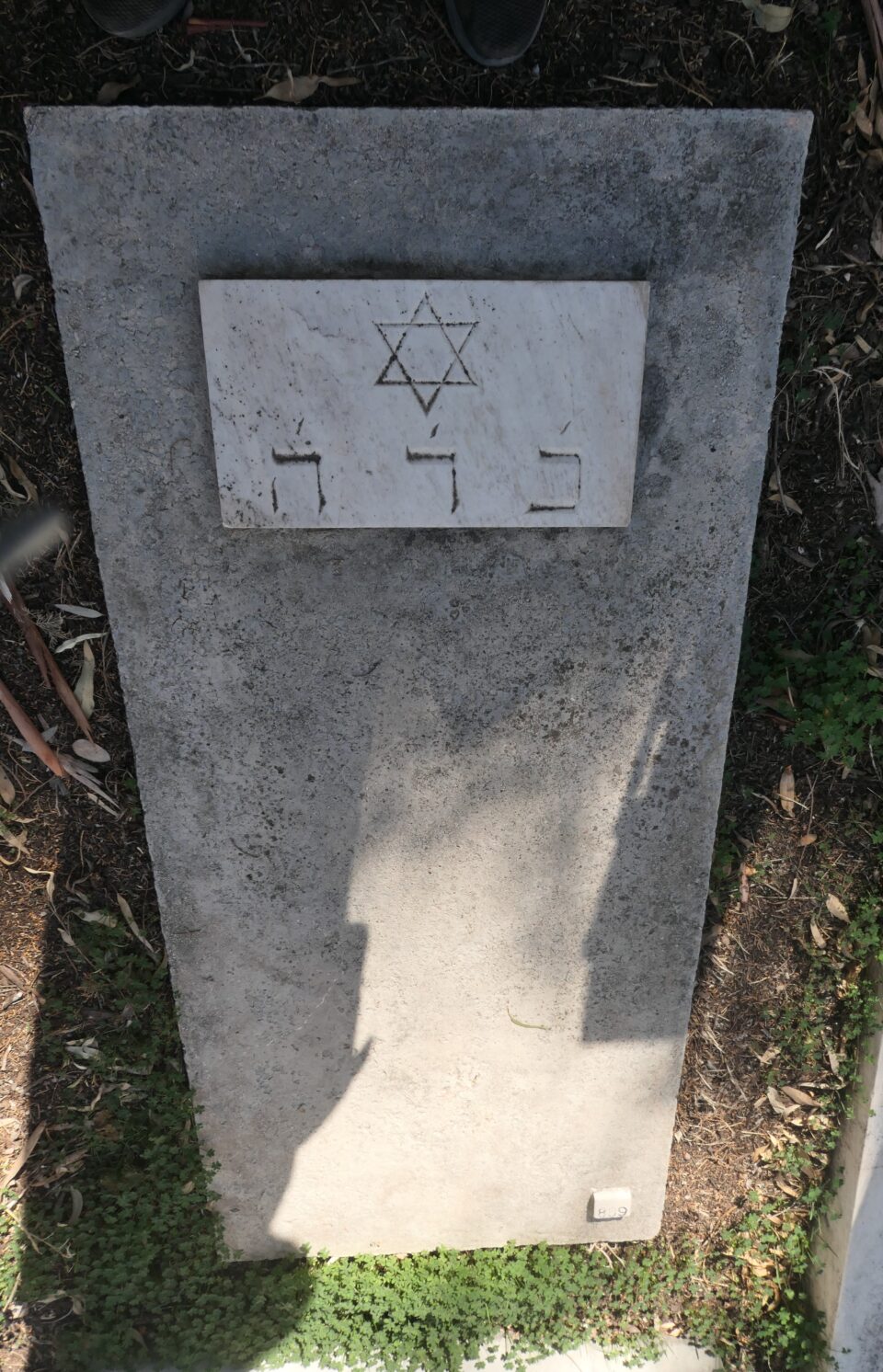
We then took a 25 minute taxi ride to the suburb of Nikaia. The taxi dropped us off at the entrance to the Third Municipal Cemetery. We walked along the wall, figuring we would eventually reach the gate to the Jewish section. The municipal cemetery is so large, that we walked more than a kilometer before we found the entrance. Along the way were many flower shops, catering to those that place flowers on the graves.
Unlike other Jewish cemeteries we had visited in Greece, the gates to this one were kept open during the day. In fact, many people entered, using it as a short-cut to reach the far side of the municipal cemetery. When you pass through the gates, you enter a large plaza. On one side is a funeral chapel, and on each end of the plaza is a memorial.


Against the wall of the cemetery is a memorial erected in 1998 for the Jewish Greek soldiers that fell at the beginning of World War II : This monument was erected in honor and eternal memory of the 26 Greek Jewish officers and army men who fell heroically fighting for the fatherland in the 1940-41 war. On the back wall are the names of the Jewish war veterans of the Greece League.
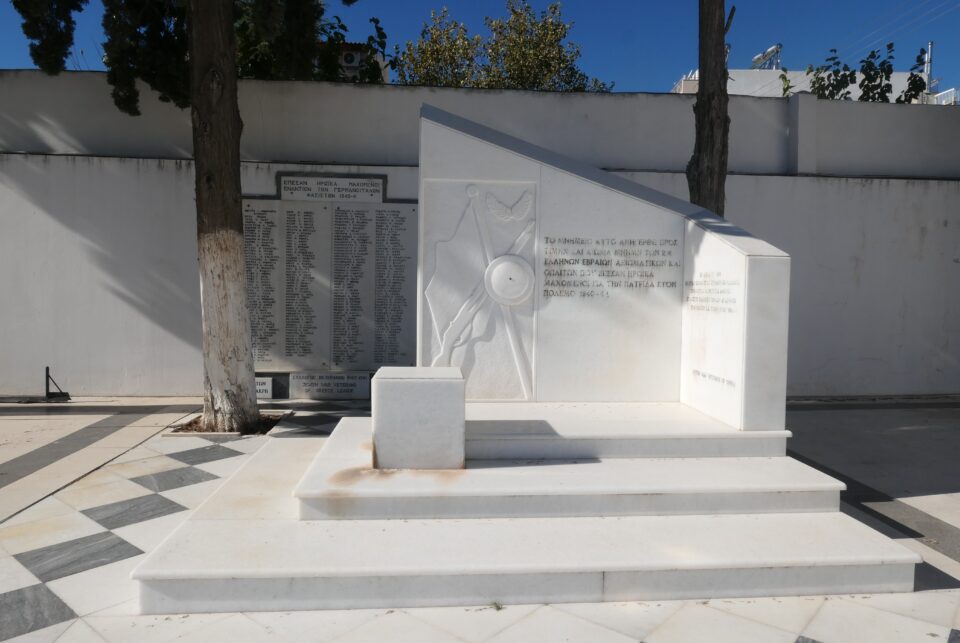
On the opposite end of the plaza is a Holocaust memorial. It has a list of cities in Greece, and for each city it has the number of Jews that lived there, and of those, how many survived and what percentage were killed. At the very bottom of the monument is a quote from Jeremiah “May my eye be a fountain of tears to weep day and night for the unjustly hatred of my people.”
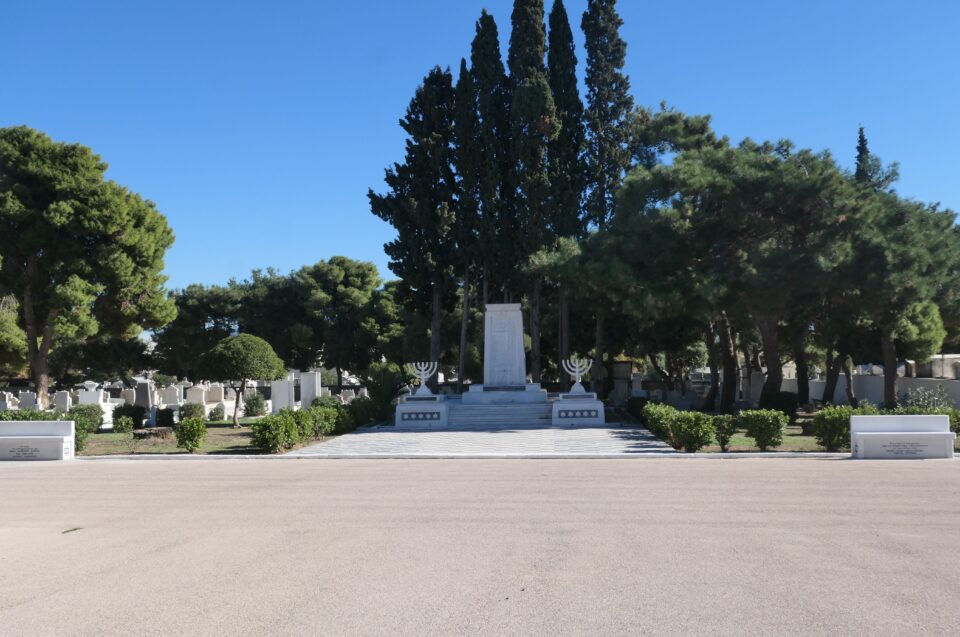
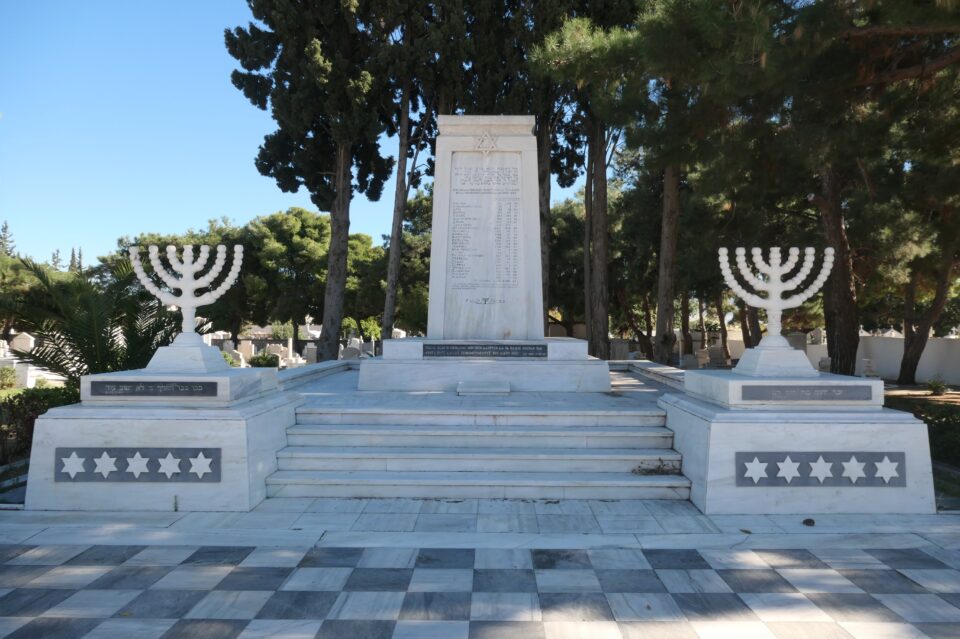

| CITY | POPULATION BEFORE THE WAR | POPULATION AFTER THE WAR | PERCENT KILLED |
| ATHENS | 3000 | 4930 | 64% |
| ALEXANDROUPOLIS | 140 | 4 | 97% |
| ARTA | 384 | 60 | 84% |
| VERRIA | 460 | 131 | 72% |
| VOLOS | 872 | 645 | 26% |
| DIDYMOTEICHO | 900 | 33 | 96% |
| DRAMA | 1200 | 39 | 97% |
| ZAKYNTHOS | 275 | 275 | – |
| THESSALONIKI | 56000 | 1950 | 96% |
| IOANNINA | 1850 | 163 | 91% |
| KAVALA | 2100 | 42 | 98% |
| KASTORIA | 900 | 35 | 96% |
| CORFU | 2000 | 185 | 91% |
| KOMOTINI | 819 | 28 | 96% |
| LARISA | 1120 | 726 | 35% |
| NEA ORESTIADA | 197 | 3 | 98% |
| ΧΑΝΤΗΙ | 550 | 6 | 99% |
| PATRAS | 265 | 152 | 43% |
| PREVEZA | 250 | 15 | 94% |
| RHODES | 1701 | 40 | 97% |
| SERRAI | 600 | 3 | 99% |
| TRIKKALA | 520 | 360 | 31% |
| FLORINA | 400 | 64 | 84% |
| CHALKIS | 325 | 170 | 48% |
| CHANIA | 350 | 7 | 89% |
| TOTALS | 77,178 | 10,066 | 89% |
At the bottom of the monument, there is a footnote that explains that the population of Athens increased after the war, because it was the city were the survivors from different communities came to.
One entry in this list stands out – different than all the rest – and that is Zakynthos, an island in the Ionian Sea west of mainland Greece. It is a well-known summer destination with a spectacular natural landscape, stunning beaches, and traditional villages.
When the Germans came to the island in 1944, they requested a list of all the Jews. The mayor of the island, Loukas Karrer, handed them a list of only two names – his own and that of Bishop Chrysostomos. The bishop bravely told the Germans, “Here are your Jews. If you choose to deport the Jews of Zakynthos, you must also take me, and I will share their fate.” The Jews of the island were all hidden in local Christian homes. Though the whole island knew what was happening, not one person revealed their whereabouts. A boat was never sent to deport the Jews of Zakynthos and all 275 of the island’s Jews survived the Holocaust. After the war, all of the Jews of Zakynthos moved either to Israel or to Athens.
In 1953, a large earthquake caused much damage on the island. The first boat to arrive with aid for the victims was from Israel, with a message that read, “The Jews of Zakynthos have never forgotten their mayor or their beloved bishop and what they did for us.” Today, in the place where the synagogue once stood, is a memorial to the mayor and the bishop. Their names were among the names inscribed in the Memorial of the Righteous Among Nations that we had seen yesterday in Athens. This trip we did not manage to reach Zakynthos, but hopefully one day we will get a chance to visit and pay tribute.
Behind the Holocaust Memorial, are the graves of the New Jewish Cemetery. It is very orderly and well maintained. Almost all the tombstones are decorated with a menorah or a star of David. Unlike the Christians who place flowers on graves, the Jewish tradition is to place a stone. Here, they have special holders for small stones that can be used.
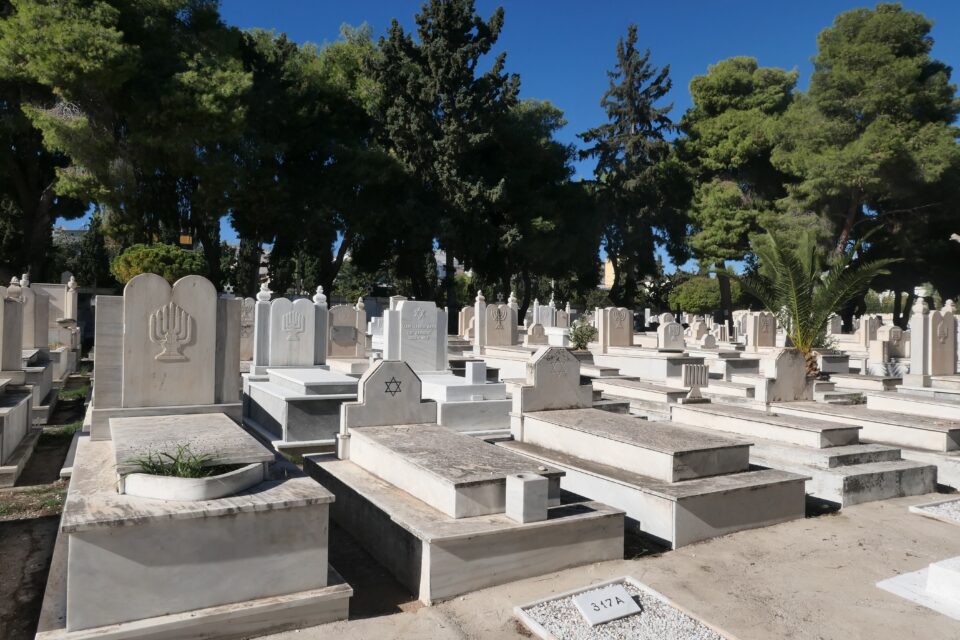
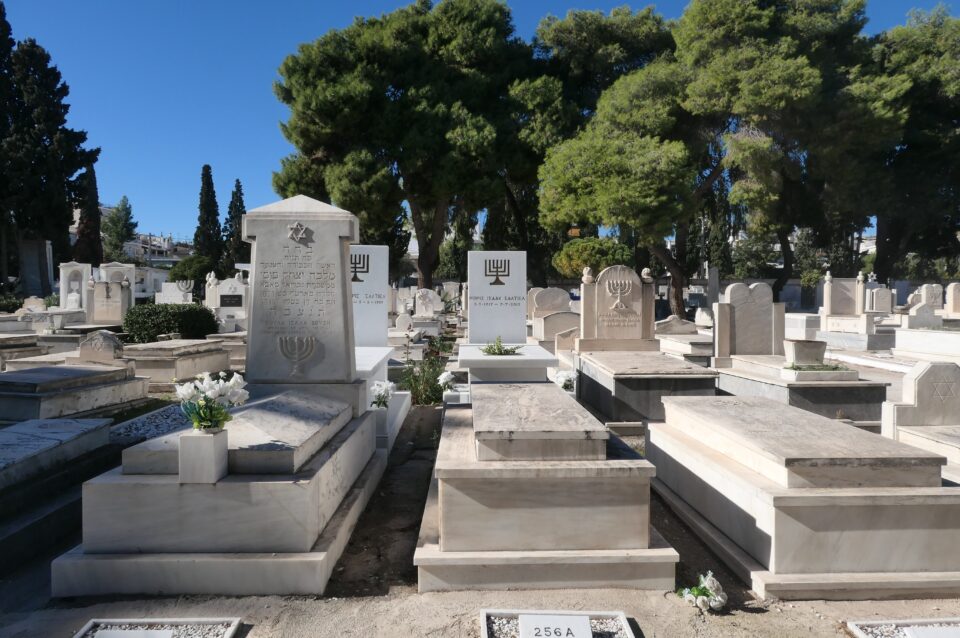
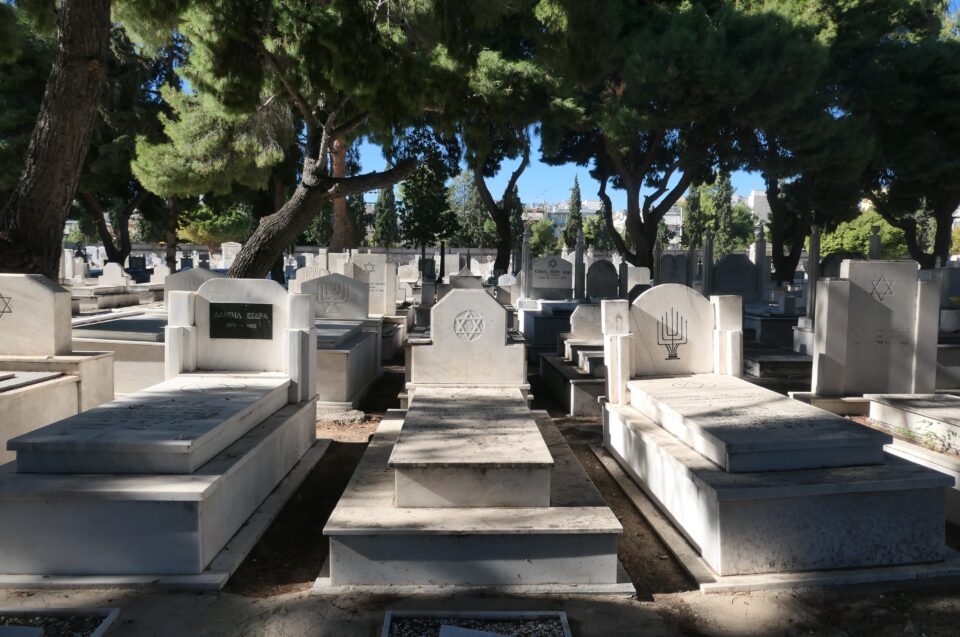


Immediately outside the cemetery was a boulevard lined with orange trees. We sat on a bench and had our picnic lunch and a just-picked orange for dessert. From there, we walked to the nearest subway stop. The Athens subway has three lines – the red, the blue and the green. We were going to take the blue train back to the center of town. We were surprised at how clean and modern both the station and the train were. The ride was pleasurable and fast. Only as we approached the center of town, did the train get crowded – mostly with students heading home from school.
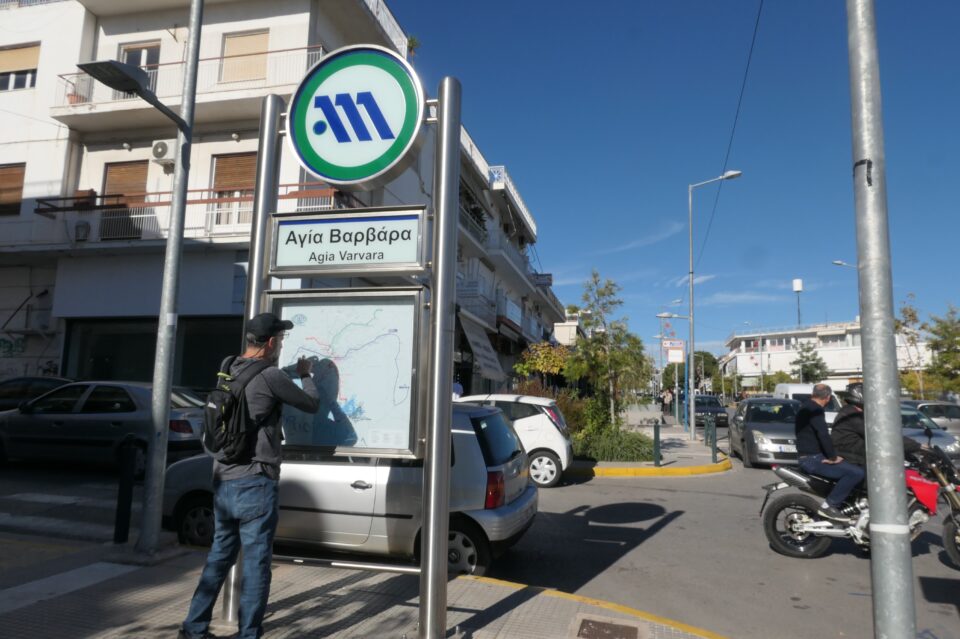
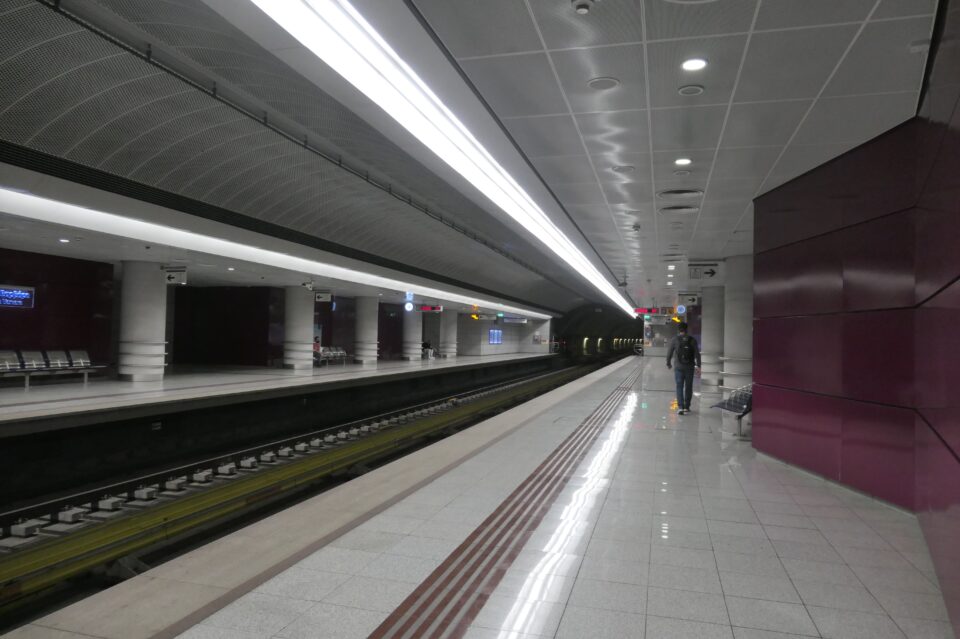
Our next destination was Lycabettus Hill, the highest point in Athens. The hill is near the center of the city and has a church built on top. To reach the top, there is a funicular. We exited the subway at the base of the hill, in the neighborhood of Kolonaki. This was a beautiful modern upscale residential area with occasional restaurants. We then discovered that the funicular runs only for the top 1/ 2 of the hill – the first half you need to climb about 12 stories up to reach the station. The funicular runs underground, and you only see advertisements projected on the walls, and not the view as you ride up. Once on top, it is a short climb to reach the church and from there you have a 360-degree panoramic view of the city. Unfortunately, the sun was directly behind the Acropolis and it was hard to see. Probably better to visit here early morning or towards evening when the sun will not be in the way.


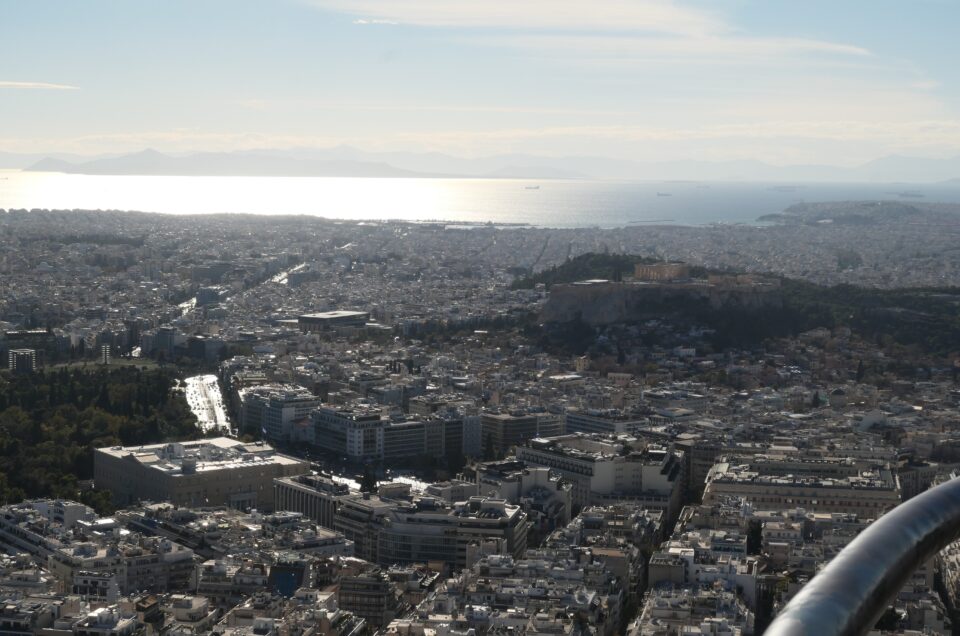
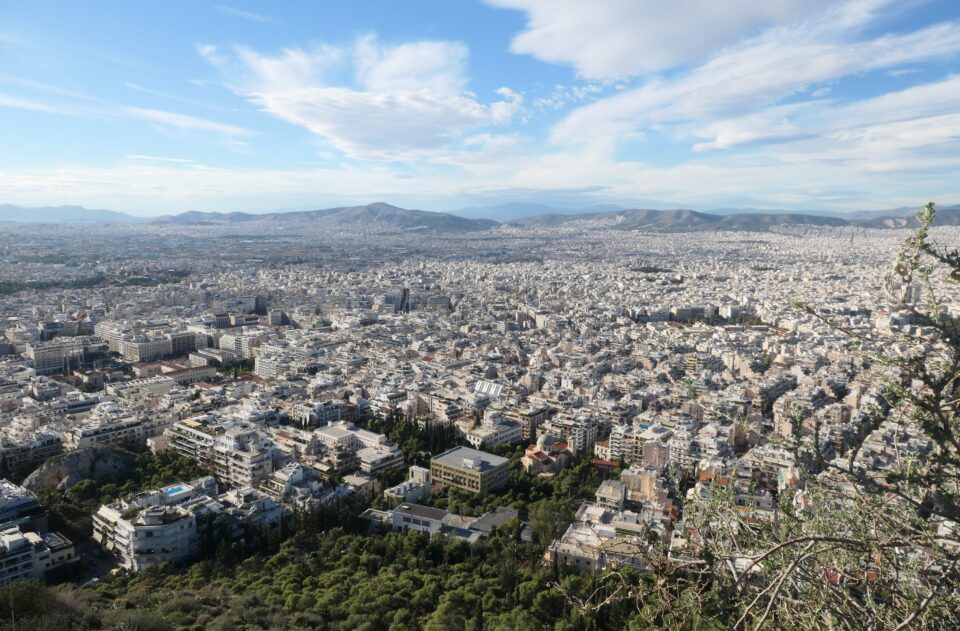
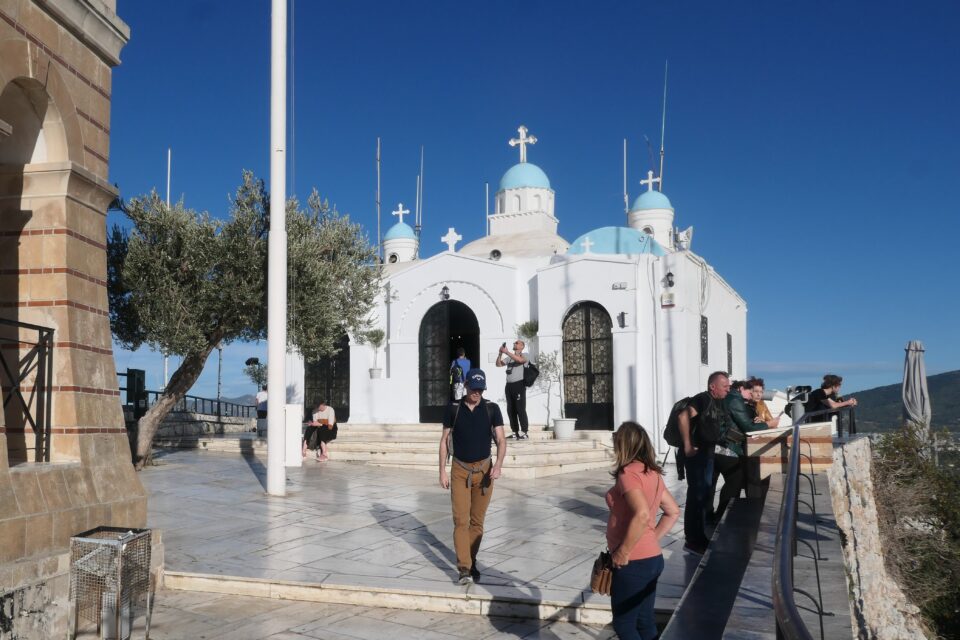
We returned partially downhill with the funicular, and then continued walking down to the center of town to Mamma Terra. This was a different branch of the same vegan restaurant we had enjoyed next to the Acropolis Museum. Mark had wanted to try a vegan version of the classical Greek dish moussaka. This branch of Mamma Terra had vegan moussaka on the menu. Delicious.
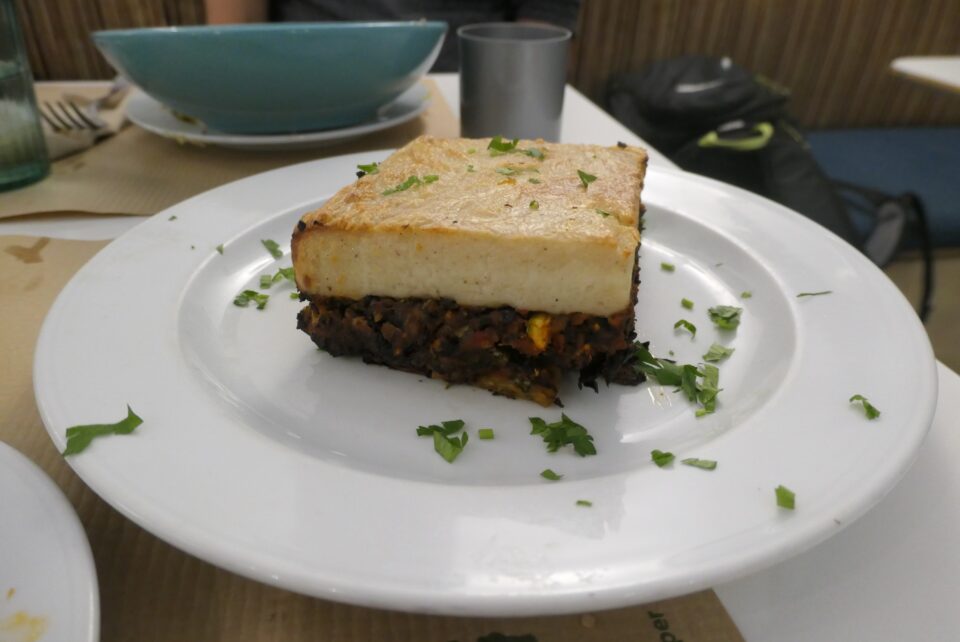
To reach our next destination, we once again took the Athens subway. This time we took the green line – an older line and it was not as clean or modern. It was full of graffiti and crowded – similar to the NY subway. We exited the subway in Ágios Nikólaos. This was obviously a much poorer neighborhood than what we had seen up to now.
Our destination was Pafou Square. In the square is a memorial to children that were killed in the Holocaust. Part of the dedication of this memorial, was to provide a playground for the children of this neighborhood. The square was not far from the subway station, and we easily found the small memorial. In Google Street view, we saw that playground that once was there, but now all there was was a locked, empty lot filled with garbage. No playground equipment anywhere. Seems like this was a case of good intentions gone wrong.
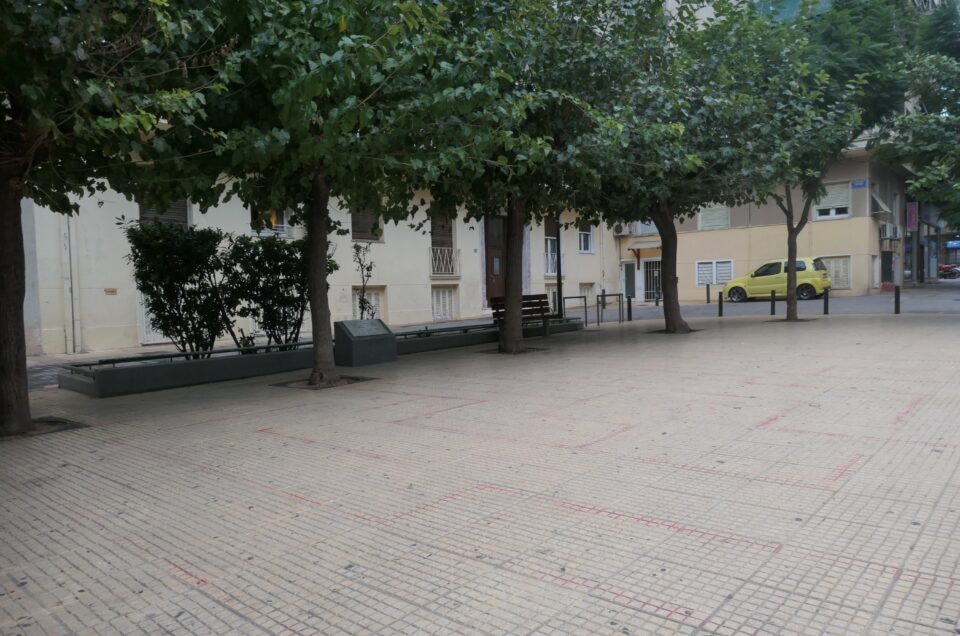

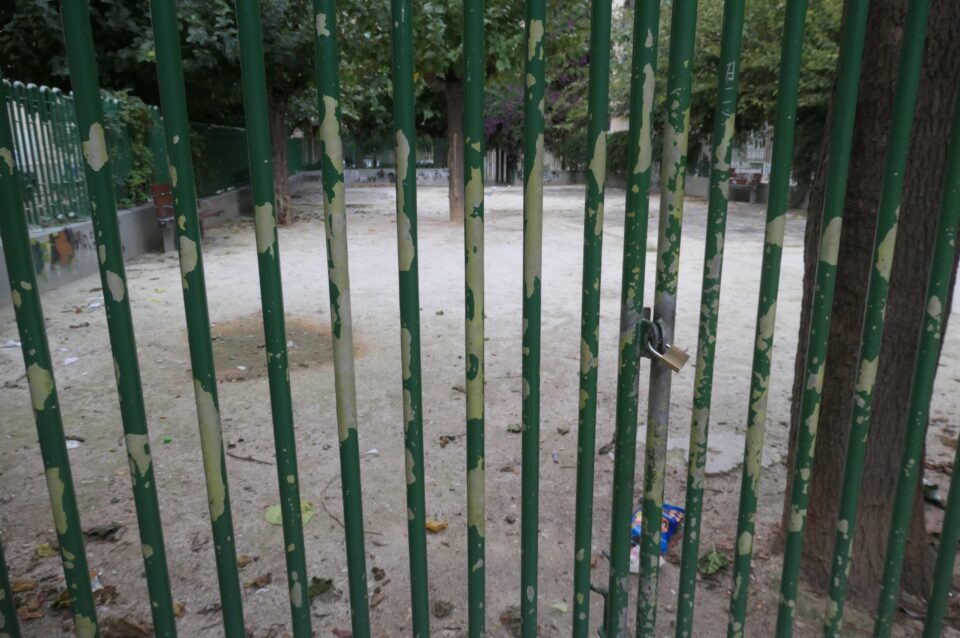
We returned with the subway to Monastiraki square, near our apartment and arrived home just as it got dark. Happy for a long and interesting day.
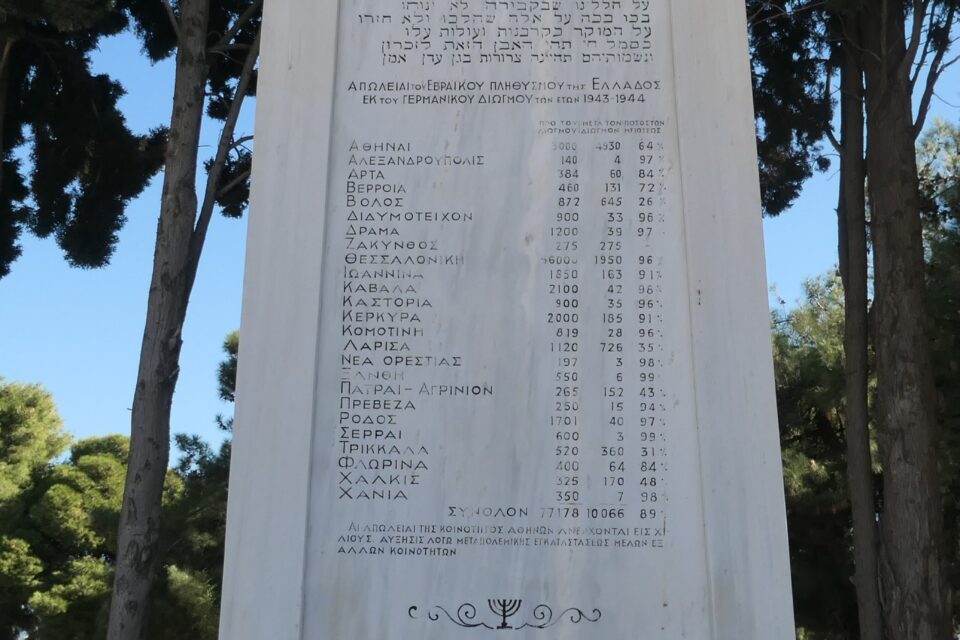
I also use Mass Transit 🙂
It was a busy day!